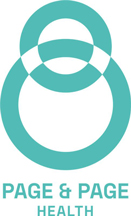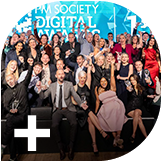The smarter spending playbook: Reviving stagnant pharma products without sacrificing quality
The silent killer of pharma brands isn't competition – it's complacency. As your product's growth curve flattens and sales targets remain stubbornly out of reach, the temptation to double down on familiar strategies becomes nearly irresistible. Meanwhile, procurement's drumbeat for cost reduction grows louder, demanding justification for every marketing penny spent.
“The antidote to market inertia isn't spending less – but spending smarter.”
When sales stagnate, marketing budgets often face the first and deepest cuts, but this reflexive response can actually compound the very problem it aims to solve. The instinct to slash spending might appease short-term financial pressures, but history shows this rarely revitalises struggling products.
For Erica Henninger, managing director at Page & Page Health, the antidote to market inertia isn't spending less – but spending smarter. By harnessing deeper customer insights, leveraging advanced analytics, and deploying AI strategically, you can identify untapped audiences and opportunities that breathe new life into stagnating products while optimising every penny invested.
Weathering the procurement storm
Facing soaring drug development costs, intensifying competition, and the shift toward personalised medicine, many pharma companies are reevaluating their spending priorities. Immediate budget restrictions are often the first line of defence against changing market tides, followed closely by near-term efficiency improvements through technology, and long-term supply chain optimisation.
“Marketing spend has always been first in line for cuts because many companies don’t see it as a must-have.”
Unfortunately, as Henninger notes, marketing departments often find themselves at the sharp end of these initiatives. "Marketing spend has always been first in line for cuts because many companies don't see it as a 'must have', and historically, it has been very difficult to prove its impact," she explains.
While a company may see immediate benefits from these sweeping cost-saving measures, this short-term thinking can undermine strategic objectives, causing companies to lose sight of what Henninger dubs "the longer-term trajectory". Instead, she notes, the most effective approach isn't necessarily reducing marketing investments, but optimising them through strategic and data-driven decision-making. In other words – spending smarter.
Through advanced analytics, marketing teams can precisely identify which investments generate insufficient returns and which drive sustainable growth.
"Measurement should be a mandatory inclusion in every single piece of communication," says Henninger. "There is a famous quote by one of the forefathers of marketing, John Wanamaker, 'Half the money I spend on advertising is wasted; the trouble is I don't know which half.' Well, there's no excuse for that now. Everything is measurable. When we all start to do that regularly, the mystery disappears."
This approach transforms marketing from a perceived cost centre into a strategic asset, guiding pharmaceutical brands through competitive markets with data-driven precision, rather than reactive budget reductions that ultimately compromise long-term market position and product performance.
From outputs to meaningful outcomes
In the past, pharma marketers often measured success based on outputs – such as the number of content pieces produced or the volume of materials distributed. But in today's digitally-enabled marketing landscape, we have the tools to capture insights into how each message is received, in addition to the conventional where and when information. As such, the pressure is on for teams to demonstrate a clear return on investment.
“Companies have traditionally turned to consulting firms in the first instance to identify the 'white space' they can own when entering a market or launching a new drug.”
"We've seen this real shift from outputs to outcomes," Henninger explains. "It's not enough anymore to produce a lot of content and put it out in the market. If that content can't produce outcomes, it has very little value."
This strategic pivot requires marketers to ensure every piece of communication, whether it's a digital ad, email campaign, or promotional video, drives tangible results. "What's crucial is engaging with the right audience in the right way," she explains.
"Companies have traditionally turned to consulting firms in the first instance to identify the 'white space' they can own when entering a market or launching a new drug," she explains. "While this sort of analysis certainly uncovers a territory they can lay claim to, the missing piece may just be: Is this territory actually meaningful to the people I want to attract?"
To illustrate how this works in practice, Henninger cites the case of one pharma company that, after six years on the market, faced persistently flat sales, despite various strategy adjustments. Initially, they planned to invest in a new mechanism-of-action video, assuming their product's benefits weren't clearly understood. However, when Henninger's team analysed the situation with Page & Page's AI tool, PIRL, they discovered a different issue altogether. By examining various "factors of influence" – including audience targeting, competitive landscape changes, and shifting healthcare provider interests – Henninger's team found that the company was targeting the wrong healthcare facilities and missing key audience interests.
The solution was straightforward but powerful: redirecting the sales team to the right facilities and creating patient-centred videos that addressed the actual interests of their target audience.
"One of the factors they wanted to understand was the patient profiles and patient stories," says Henninger. "So we created some patient videos, and we got them talking to the right hospitals."
This data-driven approach yielded impressive results – with sales in UK accounts increasing by as much as 73%.
AI and data insights: The key to smarter spending
Of course, to make data-driven decisions, you need the tools and capabilities to capture the necessary insights. In recent years, AI has become a powerful vehicle for optimising limited resources, allowing marketing teams to gain a deeper understanding of audience preferences, which ultimately allows them to target campaigns more effectively.
“Data without insight will not move business. This is where humans layer onto what AI and ML give us.”
"It sounds like a massive overclaim, but for those who are willing to embrace technology, there is a window for them to really make a tangible and measurable return on investment while everyone else is sleeping," Henninger explains. "We're at a brand-, business- and career-defining juncture. Those who embrace it have a much higher chance of success."
However, she is quick to point out that data is only useful when it is translated into actionable insights: "Data without insight will not move business. This is where humans layer onto what AI and ML give us." AI provides the raw material – data – but it is the human element, the strategic thinking and interpretation, that turns this data into meaningful action. By combining the capabilities of AI with expert strategic guidance, agencies can create more impactful marketing campaigns that deliver measurable results.
For Henninger, this synergy between technology and expertise underscores the importance of selecting the right marketing partners. "I remember saying to a client once, 'if you will just let us "under the hood" of your business, we can be better partners to you'," she says. "What I meant was tell us about your commercial strategy, invite us to your monthly performance meetings, take us on some sales calls, show us how the IVA [Interactive Visual Aid] is being used, let us in on competitive war gaming – it's only then that we can be true ‘growth partners’.”
Sharing commercial strategies, including agencies in performance meetings, and providing visibility into sales processes and competitive dynamics requires a lot of trust from the pharma company. As such, Henninger explains, it is critical to find a partner that not only understands their business but also possesses the technological capabilities to unearth meaningful insights that translate directly to business growth.
Breaking free from comfort zone strategies
When faced with stagnating sales, pharma brands often fall into the trap of relying on traditional "comfort zone" strategies that may have worked in the past, but are no longer effective in today's fast-paced, competitive environment.
“We believe marketing leaders should be reevaluating the data and insights upon which they are developing their strategies and content.”
"Omnichannel" methods, once heralded as game-changing in the marketing space, have become go-to strategies for boosting engagement; however, as Henninger notes, this is not a foolproof path to success. "Pharma has kind of fallen out of love with omnichannel because it hasn't produced the efficiencies or the benefits or the impact that they thought it was going to produce."
The fundamental issue lies in the approach: distributing content across multiple channels without truly understanding audience motivations. "The biggest mistake is probably just thinking more is better," she explains, "and not stopping to really go 'OK fundamentally, what's the problem we need to solve and who are the people we want to target?’. Let's get under the skin of who we're really talking to and what it's going to take to move them.'" A lack of insight can result in ineffective campaigns that do not resonate with the target audience.
For companies facing stalled campaign progress, reevaluation should begin with the data and insights underpinning their strategies. "We believe the first thing marketing leaders should be reevaluating are the insights upon which they are developing their strategies and content," Henninger advises.
Equally important, she stresses, is assessing current partnerships. Companies should question whether their partners truly understand their commercial strategy and business needs. The most valuable partners combine AI and data analytics with strategic insight to transform marketing investments from routine expenditures into powerful growth drivers that break free from comfortable but ineffective approaches.
Rewriting the growth equation
The most powerful shift in pharmaceutical marketing isn't technological – it's philosophical. Brands that break through performance barriers actively seek out change, embracing the discomfort of new challenges as the price of innovation.
Companies that achieve sustainable growth focus on extracting maximum value from every investment, rather than merely preserving budgets. They recognise that staying relevant means constant reinvention, not perfecting yesterday's strategies.
The distinction lies in approaching marketing as a precision tool, rather than a volume game. By leveraging AI-powered analytics and audience segmentation, brands can discover untapped potential even in seemingly exhausted markets.
As Henninger concludes: "These are exciting times, and as marketers begin to see what evolving technology has the potential to deliver – in terms of minimising waste and maximising return on investment – those who embrace it first will be the ones to reap the greatest benefit."
About Page & Page Health
Page & Page Health is an outcomes focused healthcare communications business. We see ourselves as a growth partner for our clients, dedicated to ensuring better outcomes for stakeholders, healthcare professionals and, ultimately, patients. We've won many awards for our science, creativity, and technological innovation, although the true satisfaction we derive is from the journey we go on with our clients, rather than the destination. We partner with some of the best clients in the world and, on their behalf, we endeavour to be as innovative, creative, thorough and pragmatic as we can possibly be. Our proprietary AI engine, PIRL, enables us to understand our audiences’ beliefs and behaviours intimately, and our insights-driven approach, in combination with heaps of imagination, helps us to ensure that our clients consistently gain the maximum impact for their marketing budgets.
About the interviewee
Erica Henninger
Managing director at Page & Page Health.
Erica Henninger is a seasoned business leader who leads the agency team across global brand development, engagement strategy and implementation. She has held senior roles in the New York offices of TBWA, Deutsch and Doremus, and in London at RAPP, McCann Health/MRM, and Real Chemistry.
Supercharge your pharma insights: Sign up to pharmaphorum's newsletter for daily updates, weekly roundups, and in-depth analysis across all industry sectors.
Want to go deeper?
Continue your journey with these related reads from across pharmaphorum
Click on either of the images below for more articles from this edition of Deep Dive: Market Access and Commercialisation 2025

















